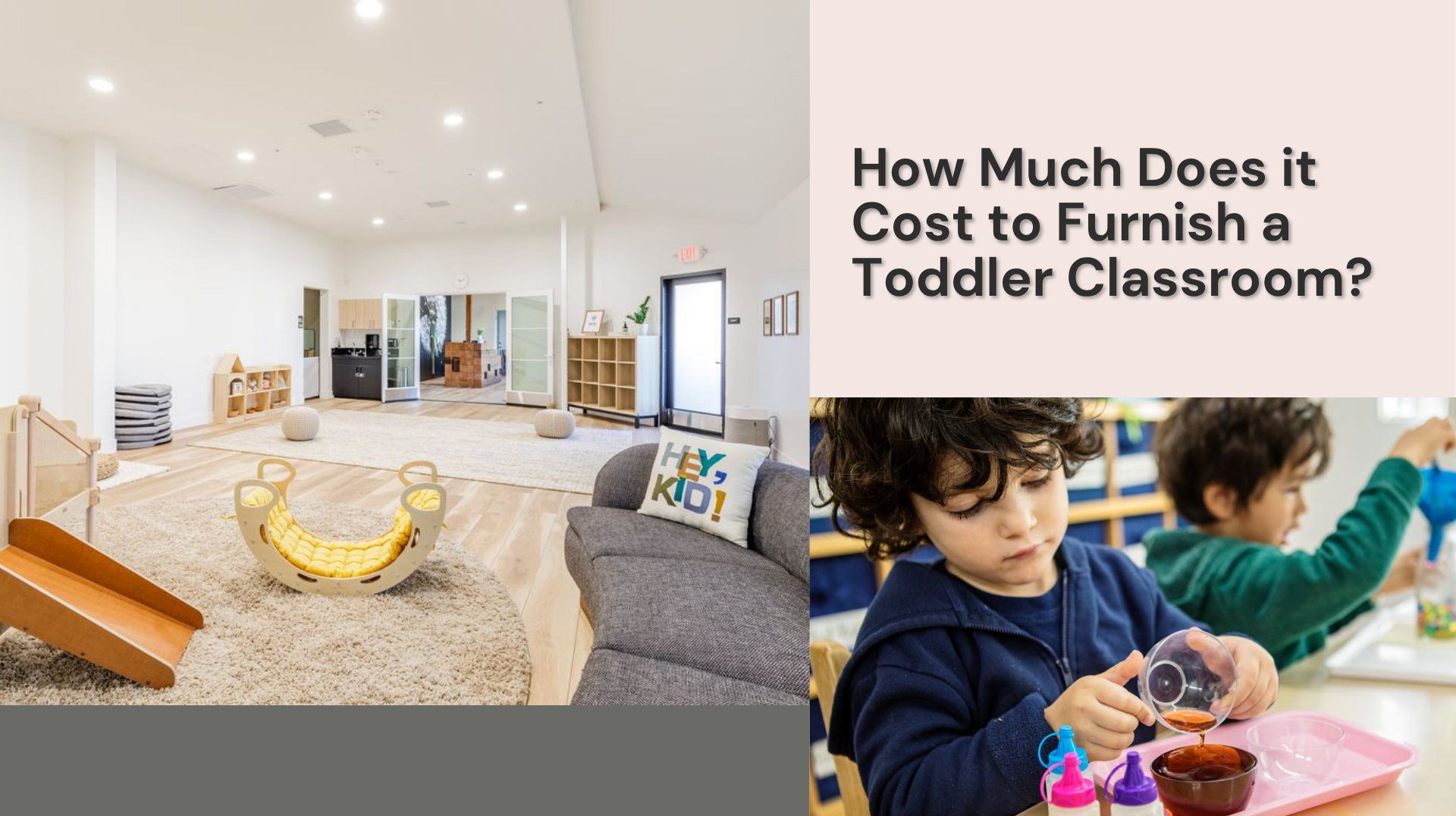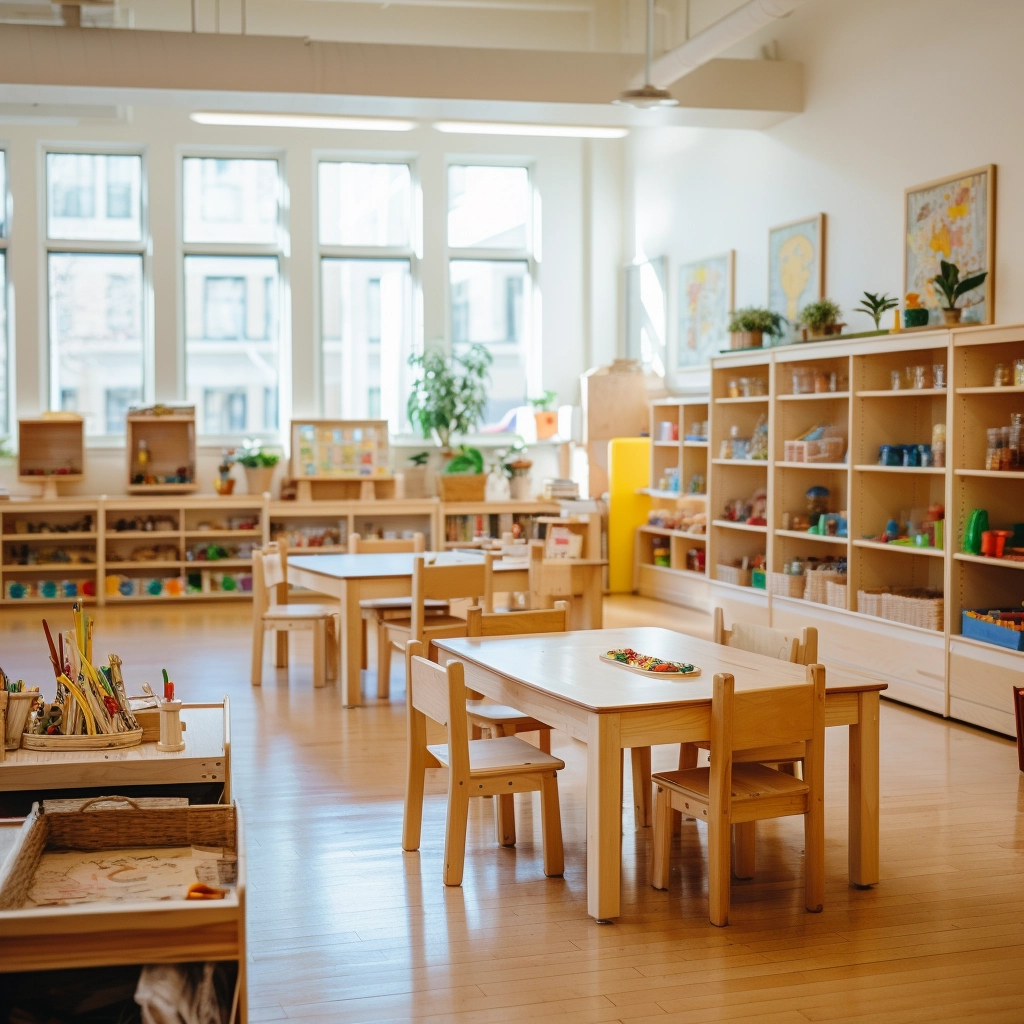Are you planning to open a toddler classroom but unsure where to begin? Worried the costs will stack up quickly and you’ll overlook key items? Or maybe you’re unsure which furniture pieces are essential, and which ones are just “nice-to-haves”?
Designing and furnishing a toddler classroom is a meaningful investment in early childhood development. Every chair, shelf, and rug you choose plays a role in creating a safe, nurturing, and developmentally appropriate space. Whether you’re opening a brand-new center or updating an existing one, careful planning is key to staying on budget and choosing the right pieces to support toddlers’ growth and educators’ daily routines.
At West Shore Furniture, we’ve supported preschool founders, education groups, and international buyers for over two decades, helping them build smart, budget-friendly classrooms with quality furniture. If you’re wondering what it costs to furnish a toddler classroom and how to avoid overspending while still meeting high standards of safety and durability, this article is for you.
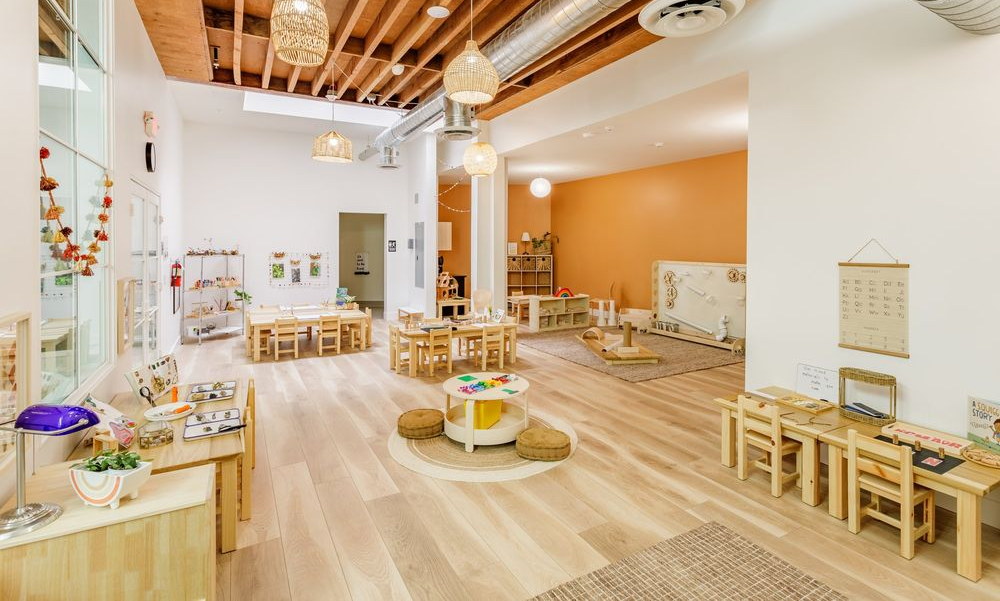
The Calculation Method for a Classroom Decoration in This Article
When calculating the cost to furnish a toddler classroom, we’ve based our figures on a classroom size of 12 children aged 12 to 24 months. This number aligns with standard licensing requirements and recommended adult-to-child ratios in many countries, especially across North America, Australia, and Europe. It’s also the most common group size we see in toddler classrooms furnished by our clients.
In the sections that follow, I’ll break down the estimated costs into three main categories: essential classroom furniture (like tables, chairs, and cubbies), learning center materials (such as manipulatives, sensory tools, and art supplies), and specialized setups based on different educational approaches like Montessori, Reggio Emilia, or traditional play-based classrooms. These variations significantly affect your final budget depending on how deeply you integrate hands-on materials and open-ended learning resources into your space design.
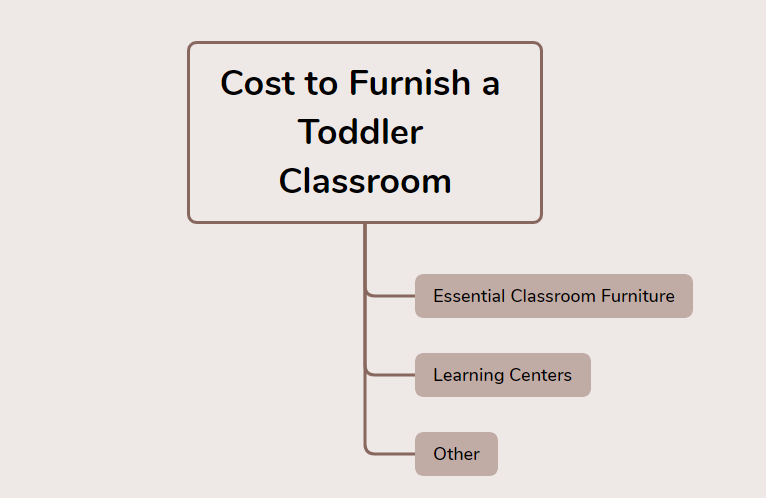
How Much Does It Cost to Furnish a Toddler Classroom? – Essential Classroom Furniture
To fully furnish a toddler classroom for 12–15 children, the average total cost typically ranges from $4,800 to $7,400 USD. This estimate includes the essential furniture and foundational supplies needed to build a safe, engaging, and developmentally appropriate learning space.
This section breaks down the cost item by item, starting from the most essential pieces. These items aren’t just practical—they directly support toddler growth, safety, independence, and day-to-day classroom flow.
Lockers and Cubbies
Every toddler in your classroom needs a designated cubby or locker to store their items—like diaper bags, extra clothing, or comfort blankets—in a clean and organized manner. For a group of 12 toddlers, that means 12 individualized storage compartments. We typically recommend units made of solid birch or laminated plywood, which are both durable and easy to disinfect.
Why it matters: Organized cubbies reduce clutter, support hygiene, and streamline teacher routines.
Cost factors: Wood type, cubby configuration (open shelf vs. closed locker), wall-mounted vs. mobile, built-in name plates.
Expected cost for a full set: $1,500 to $2,200
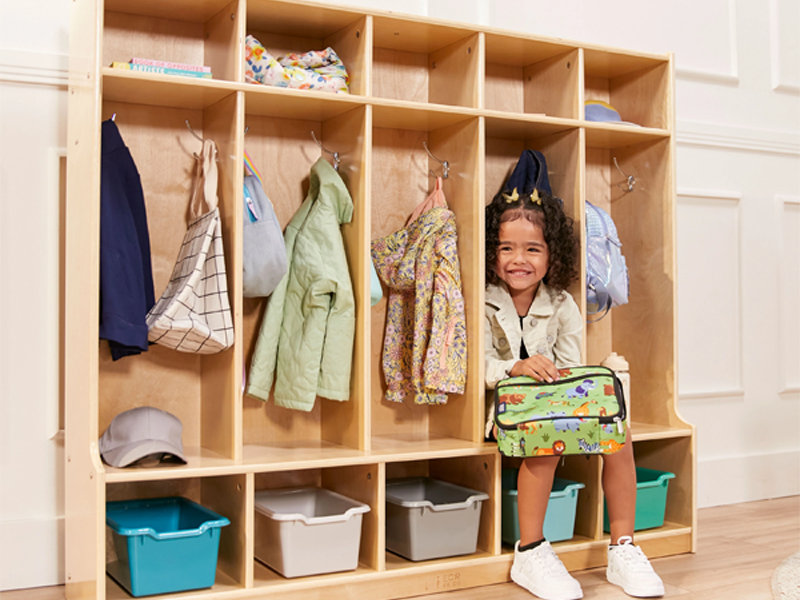
Classroom Tables and Chairs
Well-sized tables and chairs are the backbone of a toddler classroom. For children between 12 and 24 months, seating should match their height and mobility level. Tables typically sit at 14 inches high, and chairs should be between 6 and 9 inches. A classroom serving 12 toddlers generally needs 3 to 4 tables and a full set of matching chairs.
Why it matters: Proper seating promotes healthy posture, supports classroom routines, and encourages social interaction during meals, art, and learning activities.
Cost factors: Surface material (solid wood, laminate, ABS), edge finish (rounded vs. square), fixed vs. adjustable leg height, and mobility features.
Expected cost for a full set: $1,300 to $1,600
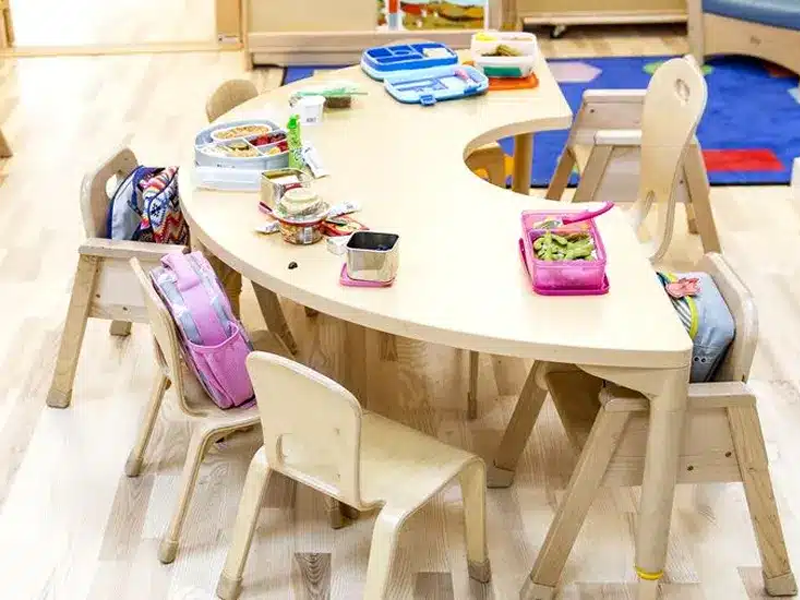
Dining and Mealtime Supplies
A well-prepared toddler dining area includes more than tables and chairs. You’ll need a complete set of mealtime tools designed for small hands, such as child-safe cups, plates, bowls, utensils, bibs, and placemats. Some setups may also include a serving trolley or self-service trays.
Why it matters: Promotes independence, fine motor skills, and mealtime routines. Safe, durable materials prevent injury and ease cleanup.
Cost factors: BPA-free plastics vs. silicone or stainless steel, dishwasher-safe materials, quantity per child.
Expected cost for a full set: $300 to $500
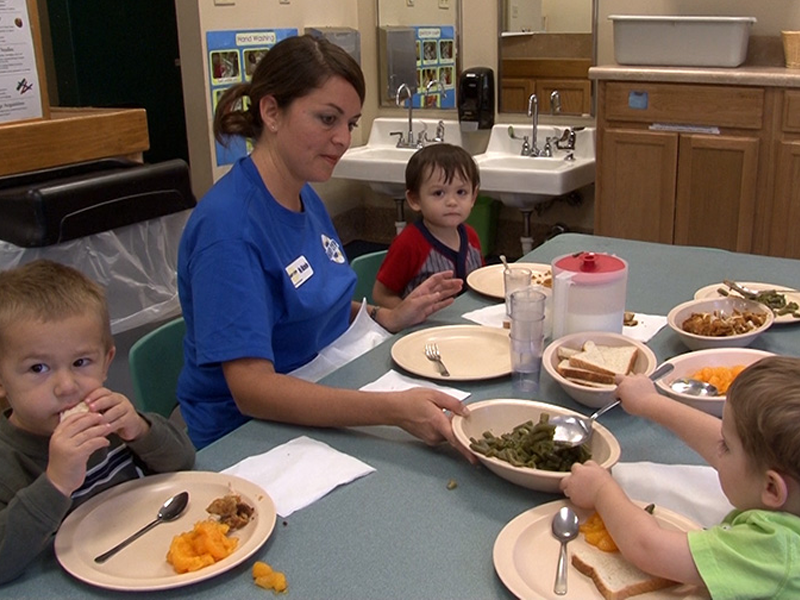
Cots and Nap Mats
Quality rest time requires the right equipment. In a toddler room, each child should have access to a nap mat or cot. For hygienic and storage efficiency, we recommend stackable cots made of soft, non-absorbent materials such as breathable mesh or vinyl. A cot rack or carrier helps maintain cleanliness and organization.
Why it matters: A comfortable, clean nap area promotes healthy sleep patterns and reduces classroom fatigue.
Cost factors: Frame construction (steel vs. composite), fabric type, stackability, and storage accessories.
Expected cost for a full set: $600 to $900
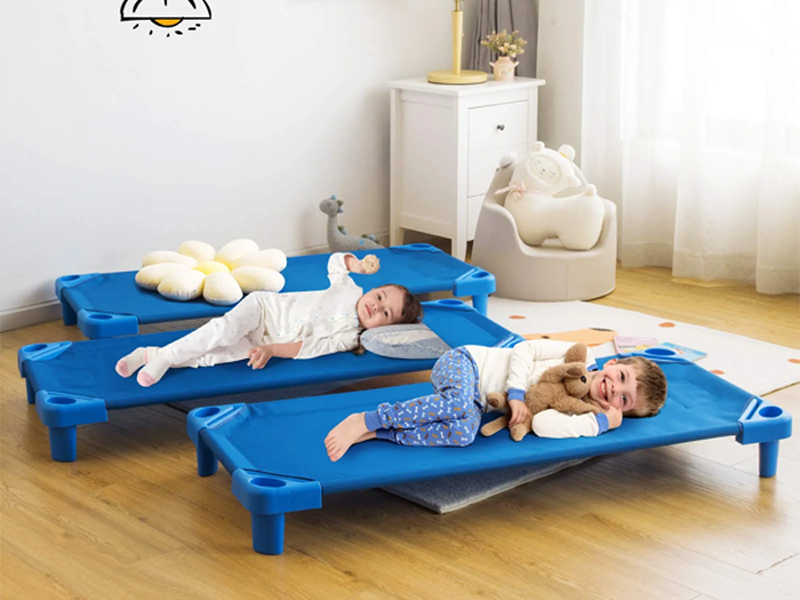
Gliders and Rockers
Gliders offer a quiet, soothing space for teachers to comfort toddlers or engage in one-on-one reading and bonding time. For a 12-child classroom, one to two gliders is typically sufficient.
Why it matters: Emotional support and physical closeness remain important in toddler years. Gliders give educators a secure place to nurture and calm children.
Cost factors: Upholstery (vinyl vs. fabric), wipeability, gliding mechanism (manual vs. smooth glide), safety design (no exposed moving parts).
Expected cost for a full set: $500 to $1,000
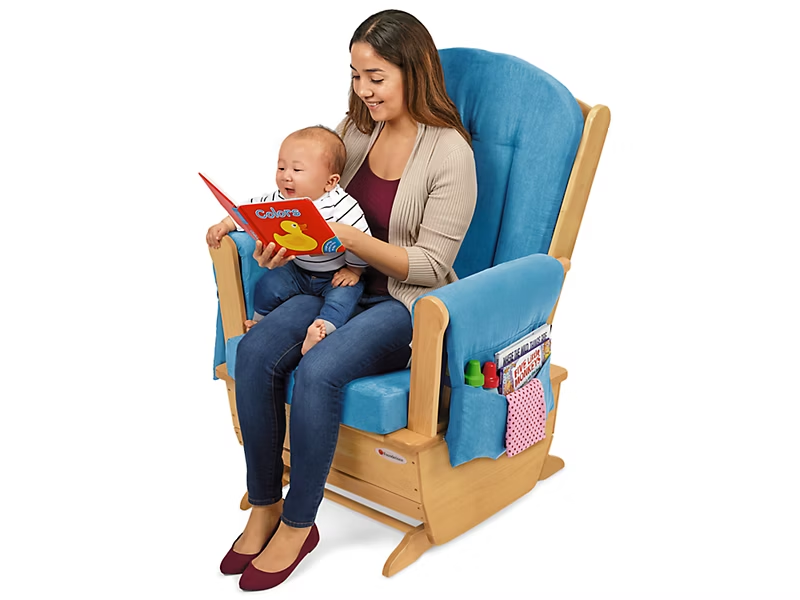
Carpets and Rugs
Soft carpets define classroom areas and support gross motor development. They also serve as safe zones for floor play and group activities. A standard toddler classroom may include one large circle rug and one to two area rugs.
Why it matters: Rugs support movement, visual structure, and acoustic control. They also reduce injuries from slips and falls.
Cost factors: Rug material (nylon vs. polypropylene), size, hypoallergenic features, anti-slip backing.
Expected cost for a full set: $600 to $1,200
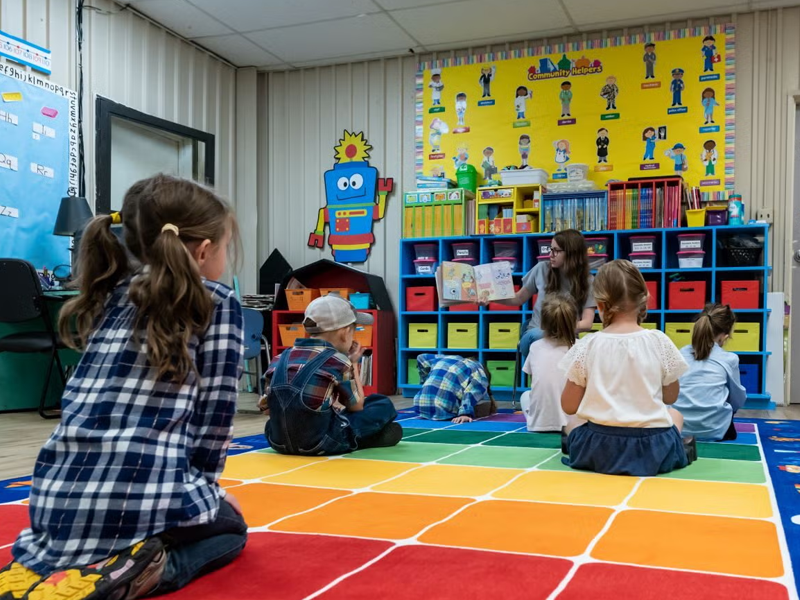
Total Estimated Cost: $4,800 to $7,400
| Category | Estimated Cost (USD) |
|---|---|
| Lockers & Cubbies | $1,500–$2,200 |
| Tables & Seating | $1,300–$1,600 |
| Mealtime Supplies | $300–$500 |
| Cots & Nap Mats | $600–$900 |
| Gliders & Rockers | $500–$1,000 |
| Carpets & Rugs | $600–$1,200 |
| TOTAL | $4,800–$7,400 |
This is the base cost, not including learning center materials, art supplies, or dramatic play items, which we’ll cover in the next section.
How Much Does It Cost to Furnish a Toddler Classroom? – Learning Centers
Once the essential furniture is in place, the next significant investment is equipping your learning centers—the heart of hands-on exploration in any toddler classroom. Depending on the educational philosophy (Montessori, Reggio Emilia, or play-based), the types and quantities of materials will vary. However, most high-functioning toddler rooms include a consistent set of core learning centers.
To properly outfit the learning centers in a 12-child toddler classroom, you should budget between $2,500 to $4,500 USD. This section breaks down the estimated cost of materials across the most common learning zones.
Block and Manipulative Area
This area supports spatial reasoning, fine motor skills, and collaborative play. Materials range from soft foam blocks to wooden stacking sets, puzzles, shape sorters, and magnetic tiles. Shelving for organization is also essential.
Why it matters: Enhances hand-eye coordination, problem-solving, and group interaction.
Cost factors: Material quality (plastic vs. solid wood), brand (generic vs. educational), number of sets, and shelving units.
Expected cost for a full set: $500 to $800
Dramatic Play Area
This zone allows toddlers to imitate daily life and explore social roles through pretend play. A well-equipped area includes a toddler-safe play kitchen, utensils, soft dolls, food sets, dress-up clothing, and storage bins.
Why it matters: Supports language development, imagination, emotional expression, and early social skills.
Cost factors: Material durability, variety of role-play items, safety design, and cleaning ease.
Expected cost for a full set: $600 to $900
Sensory and Discovery Area
Sensory exploration is foundational for toddlers. Your classroom should include sensory bins, water and sand tables, scoops, funnels, textured materials, and safe exploratory tools.
Why it matters: Builds neural pathways, supports early science inquiry, and helps regulate behavior.
Cost factors: Type of sensory tables (height-adjustable vs. fixed), sensory fillers (sand, water beads, rice), and storage.
Expected cost for a full set: $400 to $700
Art and Creative Area
Creative expression should be present daily. Equip this center with child-safe paint, crayons, washable markers, toddler scissors, glue sticks, easels, and drying racks.
Why it matters: Encourages self-expression, creativity, and fine motor control.
Cost factors: Art supply brand, volume (class packs vs. individual items), reusable tools, and cleanup features.
Expected cost for a full set: $400 to $700
Literacy and Book Area
Toddlers need constant exposure to age-appropriate language and books. A comfortable book nook should include board books, cloth books, puppets, soft seating, and toddler-height shelving.
Why it matters: Builds early vocabulary, introduces narrative thinking, and cultivates reading readiness.
Cost factors: Book selection (language, multicultural topics), seating (beanbags, soft cushions), and book display units.
Expected cost for a full set: $300 to $600
Music and Movement Area
Music and movement materials include instruments, scarves, rhythm sticks, toddler-safe tambourines, and mats for group activity. This zone enhances physical development and auditory processing.
Why it matters: Develops coordination, rhythm awareness, and emotional expression.
Cost factors: Instrument quality, quantity, storage solutions, and space definition (rugs or tape boundaries).
Expected cost for a full set: $300 to $600
Total Estimated Cost: $2,500 to $4,500
| Learning Center | Estimated Cost (USD) |
|---|---|
| Block & Manipulative | $500–$800 |
| Dramatic Play | $600–$900 |
| Sensory & Discovery | $400–$700 |
| Art & Creative | $400–$700 |
| Literacy & Book | $300–$600 |
| Music & Movement | $300–$600 |
| TOTAL | $2,500–$4,500 |
These estimates reflect a balanced and functional learning environment. Premium options (such as Montessori-specific materials) will raise your budget, while minimal starter kits can bring it down, but often at the cost of engagement and learning value.
How Educational Philosophies Affect Classroom Furnishing Costs
Not all toddler classrooms are designed the same way, especially when it comes to the philosophy of learning behind them. Your teaching model has a direct impact on what types of furniture and materials you’ll need, how your classroom zones are defined, and ultimately, how much you’ll spend.
Here’s a comparison of four widely adopted early childhood education models and their impact on your cost to furnish a toddler classroom:
| Teaching Model | Key Furniture & Materials | Typical Budget Impact |
|---|---|---|
| Montessori | Low open shelving, wooden practical life trays, child-sized real utensils, dressing frames, toddler mirror, weaning table, floor bed/cot | $$$ – Premium due to real materials and wood craftsmanship |
| Reggio Emilia | Natural textures, art atelier, loose parts (shells, wood, cloth), open-ended materials, light table, reflective elements | $$$ – Higher due to specialized materials and custom art spaces |
| Waldorf | Warm-toned wooden furniture, handmade toys, silks, seasonal tables, natural lighting, simple rhythm-based layout | $$$ – Premium due to handmade items and organic materials |
| Te Whāriki (NZ) | Whānau/family play zones, cultural representation (Māori/Pasifika), open floor spaces, naturalistic materials, emphasis on belonging and storytelling | $$ – Medium cost with regional and cultural customizations |
| Traditional | Plastic bins, soft toys, dramatic play kitchen, puzzles, story corner, block area | $$ – More budget-friendly, plastic-based materials more common |
The more customized, handcrafted, or natural your classroom materials are, the higher the furniture budget.
A Quote Example from an Actual Classroom
Estimated Total Cost: $6,000 to $12,000 USD
This is the typical investment range needed to fully furnish a high-quality toddler classroom designed for 12 children aged 12 to 24 months, based on our real customer orders and project experience across North America, Europe, and Australia.
At West Shore Furniture, we typically recommend the following standard package to global customers opening or upgrading toddler classrooms:
Our Recommended Core Package Includes:
- 3 toddler-sized rectangular or trapezoid tables + 12 chairs
- 5–6 low open shelving units for material display
- 1 dramatic play set (kitchen, dress-up rack, soft dolls)
- 1 sensory table (water/sand option)
- 1 art center with easel, paper rolls, and supply shelves
- 8 stacking cots or sleep mats
- 1 soft carpet for group time or movement
- Safety gates, soft climbers, and a toddler mirror
- 1 teacher cabinet and diapering/changing station
- 30–50 manipulatives, puzzles, and fine motor toys
This package gives our clients a functional, regulation-compliant, and developmentally appropriate classroom, ready for licensing, tours, and child-led learning.
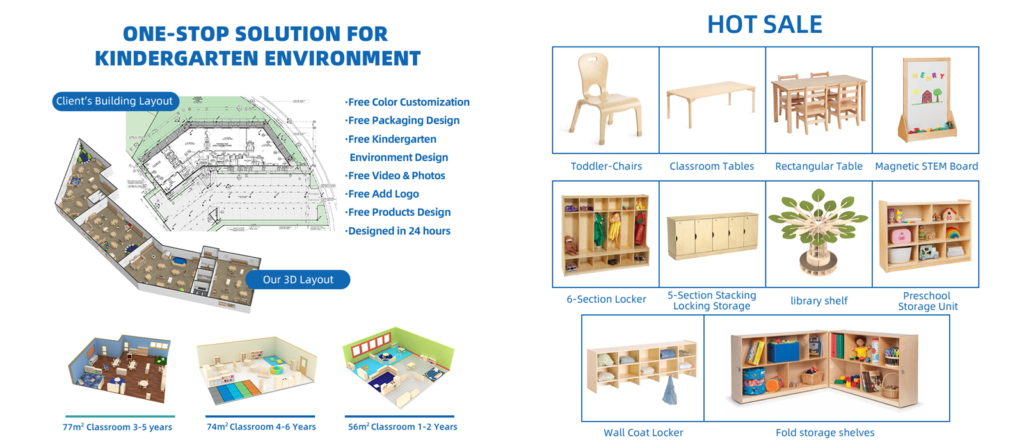
Real Cost Example
Here’s a breakdown from a recent Canadian client using the Montessori model:
| Item | Quantity | Unit Cost (USD) | Total |
|---|---|---|---|
| Toddler tables + chairs | 3 sets | $250 | $750 |
| Wooden open shelves | 5 units | $300 | $1,500 |
| Montessori practical life trays | 10 pcs | $45 | $450 |
| Dressing frames (wood) | 4 pcs | $60 | $240 |
| Real utensils & dishes | Sets | $100 | $100 |
| Cot beds | 8 pcs | $120 | $960 |
| Rugs, climber, mirror, storage | Mixed | — | $1,200 |
| Sensory and block materials | Mixed | — | $1,500 |
| Estimated Shipping (Sea) | — | — | $1,500 |
| Total | — | — | $8,200 USD |
This classroom was fully furnished and delivered within 35 days, with all furniture shipped from our factory in China via LCL sea freight.
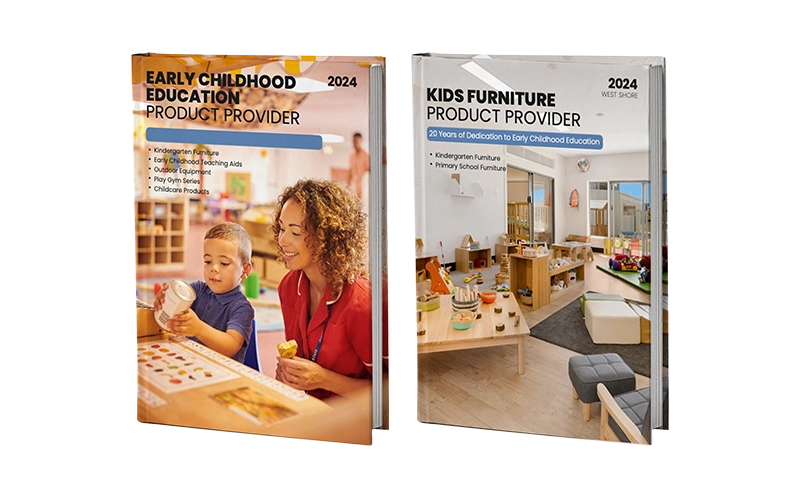
How to Allocate Your Budget Across Classroom Zones
A well-furnished toddler classroom is not just a collection of items—it is a purposeful layout of distinct, functional zones. Each area should support a developmental goal, meet safety standards, and allow for smooth classroom management. When budgeting for a classroom designed for 12 children aged 12 to 24 months, your available funds should be strategically allocated to reflect both regulatory priorities and educational outcomes.
A recommended budget allocation ratio is as follows:
- Essential furniture: 45–55%
- Learning centers and materials: 30–40%
- Teacher and hygiene support areas: 10–15%
- Contingency and logistics (e.g., shipping, installation): 5–10%
This allocation ensures you’re investing heavily in what directly impacts children’s safety and learning, while also preserving the necessary infrastructure for daily operation.
Zone 1: Core Classroom Infrastructure (45–55%)
This includes tables, chairs, lockers, shelving, carpets, cots, and safety equipment such as gates or padding. These items form the foundation of your classroom and are typically non-negotiable for licensing inspections and compliance with early childhood guidelines.
Why it matters: These components make the classroom operational. Without them, it’s impossible to manage child flow, safety, or daily routines.
What to prioritize: Durable materials, ergonomic design, age-appropriate dimensions, and safe finishes.
Recommended allocation: $3,000–$5,000 for a 12-child toddler classroom
Zone 2: Learning and Exploration Areas (30–40%)
This zone includes materials for block play, sensory exploration, dramatic play, art, music, and early literacy. The variety and quality of these items directly influence the depth of child engagement and the richness of the classroom experience.
Why it matters: These centers stimulate cognitive, motor, and social-emotional development. They also reflect your educational philosophy and classroom culture.
What to prioritize: Open-ended materials, sensory diversity, real-life items, and items that support fine motor and language development.
Recommended allocation: $2,000–$4,000, depending on your educational model (Montessori or Reggio may increase the upper range)
Zone 3: Teacher and Caregiver Support (10–15%)
This zone includes teacher storage cabinets, diapering stations, gliders for one-on-one soothing, and cleaning stations. While often overlooked in budget planning, these items are critical for teacher comfort, hygiene compliance, and classroom management.
Why it matters: Well-supported teachers can focus more effectively on children, reduce transition time, and maintain a healthier environment.
What to prioritize: Ergonomic design, accessible storage, wipeable surfaces, and compliant diapering systems.
Recommended allocation: $600–$1,500, depending on facility layout
Zone 4: Logistics, Installation, and Contingency (5–10%)
Don’t overlook the cost of international or domestic freight, installation tools, packaging removal, and backup items. Even if you’re buying at factory-direct pricing, logistics can significantly affect your total cost.
Why it matters: Failing to plan for logistics often results in budget overruns or classroom setup delays.
What to prioritize: Transparent shipping quotes, consolidated freight options, and a buffer for unexpected delays or product adjustments.
Recommended allocation: $400–$1,000 depending on shipping method (LCL vs. FCL container)
Visual Reference: Budget Allocation Summary
| Zone | Recommended Share (%) | Budget Range (USD) |
|---|---|---|
| Core Classroom Infrastructure | 45–55% | $3,000–$5,000 |
| Learning & Exploration Areas | 30–40% | $2,000–$4,000 |
| Teacher & Hygiene Support | 10–15% | $600–$1,500 |
| Logistics & Contingency | 5–10% | $400–$1,000 |
| TOTAL | 100% | $6,000–$12,000 |
By using this structure, you can make targeted purchasing decisions, avoid over-investing in non-priority zones, and ensure you have a classroom that’s not only beautiful but also functional, compliant, and educationally sound.
Ready to design a space that inspires learning? Connect with us to create customized furniture solutions tailored to your classroom needs.
How to Save Money with Affordable Daycare Furniture
Furnishing a toddler classroom doesn’t have to mean compromising on quality or safety. With the right sourcing strategies, budget planning, and material choices, you can create a fully functional and compliant classroom for a fraction of what local suppliers might charge. Many of our global clients—including those in Canada, the U.S., and Australia—successfully reduce their classroom setup costs by 30–50% by working directly with manufacturers like us.
In this section, I’ll break down five key strategies that our clients use to stretch their budgets without cutting corners.
1. Work Directly with a Factory Supplier
When you purchase from a brand or catalog company, you’re not just paying for the product—you’re also covering their markup, warehousing, and middleman logistics. At West Shore Furniture, we are a factory with five production lines, which allows us to offer direct factory pricing, custom specifications, and bundled shipping for complete classroom solutions.
Why it matters: Bypassing distributors significantly reduces your per-unit cost on major items like tables, chairs, lockers, and shelving.
How much you can save: 20–40% per classroom setup compared to retail or branded catalogs
2. Purchase in Bulk or Classroom Packages
Many early learning centers benefit from ordering by classroom, not by item. Instead of purchasing shelves, tables, and chairs separately from different vendors, bundle all your needs into a complete classroom set.
At West Shore Furniture, we provide standardized packages based on class size and age group. These bundles are pre-configured for licensing requirements and include all essential pieces at discounted set pricing.
Why it matters: Bulk pricing saves money and time. Fewer suppliers also reduce logistical risk.
How much you can save: $500–$1,500 per classroom in bundled pricing
3. Select Multi-Functional and Flexible Furniture
Furniture that serves more than one purpose helps you maximize use per dollar spent. For example:
- A storage unit that doubles as a room divider
- A low shelf with a built-in bench for reading
- Art stations that store materials and serve as easels
By reducing the number of individual items needed, you also reduce your shipping volume and installation time.
Why it matters: Fewer items save on shipping, storage, and floor space.
How much you can save: 10–15% of classroom cost by eliminating redundant furniture
4. Choose Durable Materials That Minimize Replacement Costs
Buying cheap materials may save upfront, but low-grade plywood, plastic components, or weak joints lead to faster wear and early replacements. Instead, prioritize durable, preschool-grade materials, such as:
- High-density laminated plywood
- Solid birch wood with water-based finishes
- Heavy-duty hardware and rounded corners
At West Shore Furniture, our furniture is designed to last through years of toddler use with minimal maintenance.
Why it matters: Long-term durability protects your investment.
How much you can save: $1,000+ over five years in reduced replacements and repairs
5. Optimize Shipping and Container Load
One of the most overlooked ways to save is through optimized logistics. Many buyers unknowingly pay for half-empty containers or inefficient packaging. We help clients calculate the most efficient CBM (cubic meter) load to match either LCL (less-than-container-load) or full container shipping, depending on the size of your order.
Why it matters: Maximizing container space directly reduces the cost per item delivered.
How much you can save: $300–$800 per container load
By applying these five strategies together, many of our clients reduce their initial setup budget while still meeting high standards for safety, quality, and educational alignment. Whether you’re opening your first center or expanding a chain, working directly with a factory supplier like West Shore Furniture gives you cost control without sacrificing quality.

FAQs
What’s included in daycare startup costs beyond furniture?
In addition to furniture, daycare startup costs typically include:
- Licensing and inspection fees
- Classroom supplies (diapers, wipes, cleaning products)
- Learning materials (books, manipulatives, art supplies)
- Staff hiring and training costs
- Facility renovations or safety modifications (gates, flooring, ventilation)
- Insurance, legal fees, and marketing
These expenses can add up quickly. Many of our clients allocate 30–40% of their startup budget to non-furniture items. Planning for these early helps avoid delays and ensures compliance.
Can I furnish a toddler classroom on a tight budget?
Yes, it’s possible to furnish a toddler classroom on a limited budget if you focus on:
- Prioritizing essential items first (tables, chairs, cots, shelves)
- Choosing multifunctional furniture (e.g., storage that doubles as dividers)
- Working with a factory-direct supplier like West Shore Furniture to reduce middleman costs
- Opting for package deals or pre-configured classroom sets
- Starting with fewer learning materials and expanding gradually
A well-functioning, safe toddler classroom can be created for as little as $6,000 with careful planning and smart purchasing decisions.
Do toddler classrooms need to follow safety furniture regulations?
Yes. All toddler classrooms—whether public, private, or home-based—must meet strict safety and material standards, especially in regulated markets such as North America, Europe, and Australia.
Key requirements include:
- Rounded edges and non-toxic finishes
- Tip-resistant shelving and stable furniture
- Finger-pinch protection in moving parts (gliders, drawers)
- Certified materials (CARB Phase II, EN71, ASTM, or equivalent)
- Fire safety compliance for soft furnishings
At West Shore Furniture, our furniture complies with international child safety standards, and we provide documentation to support licensing and inspections.
Conclusion
Furnishing a toddler classroom is a strategic investment in both child development and operational success. By understanding the cost structure and choosing the right supplier, you can balance quality, safety, and budget to build a space that supports joyful, independent learning from day one.

